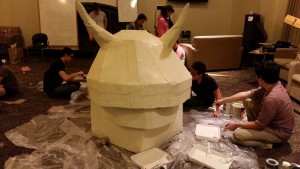I learned in this internship with TLT to see myself through another’s eyes. This includes everything – the way I present myself, the way I carry out actions, how I carry out actions, and the like. I’ve changed as a result – rather than dealing with everything as if it was a computer science related problem, I can cater to any area without being disingenuous to another. Essentially, the way I handle computer science problems is to diagnose the system mentally and carry out the solution right then and there, but in a customer service setting, this mantra doesn’t work as well. I’ve been learning (slowly) to involve the user in this process, which creates a two-way street where learning can occur in any direction.
Going hand-in-hand with broadening my horizons in dealing with issues is to understand that my ways aren’t the only way to perform an action, and just because there’s documentation saying method X is better doesn’t mean that method Y is easier and quicker, and still gets the requested end result. In other words, this is another case I’ve learned to accept that methodologies can be a countably infinite space.
Working in a team environment has benefits, especially if the team is good. That’s the grand idea of good teamwork: If the team is enjoyable, work will get done faster and possibly be better. The key here: a good bit of humor. I learned this helping with Roth Regatta – a little humor goes a far way in keeping good spirits.
Overall, I would say this internship taught me how to think in a big picture view, from a reliability standpoint. In addition to making at least 30 new friends between the Senior Consultants and Interns, I really do believe I can continue making SINC Sites to be clean and efficient computer labs when necessary.
It’s been a good semester,
Frank Migliorino


